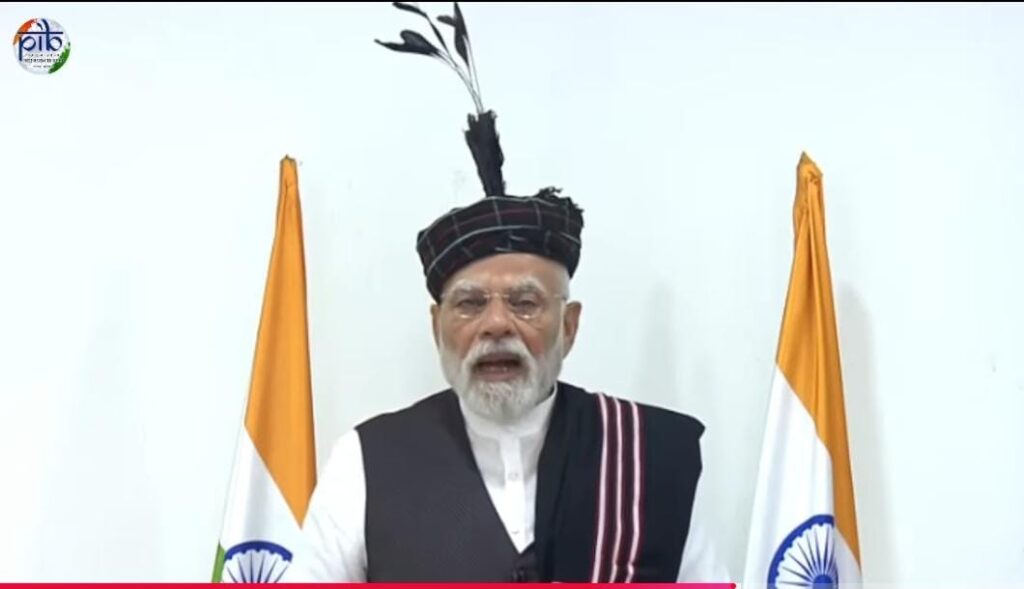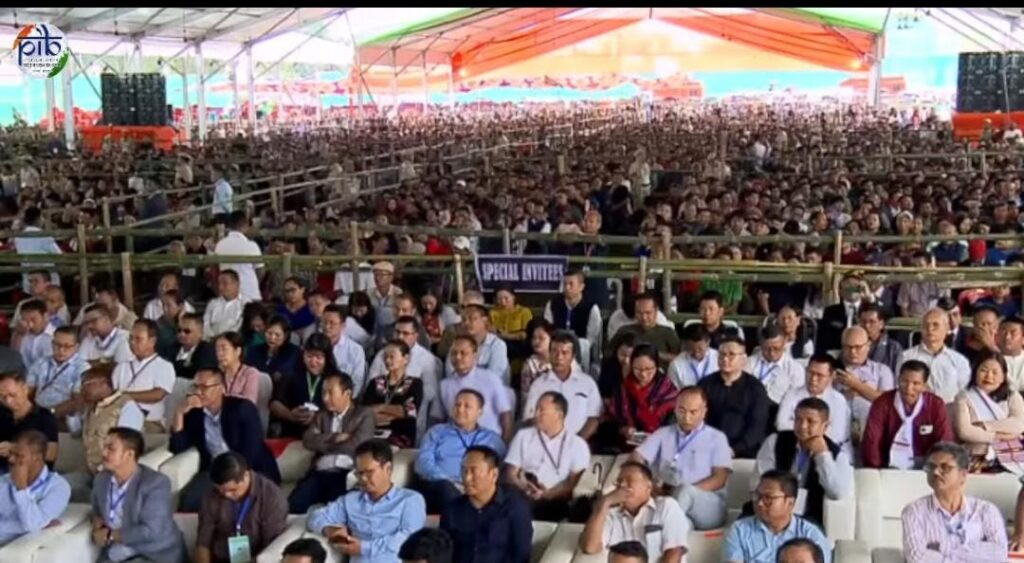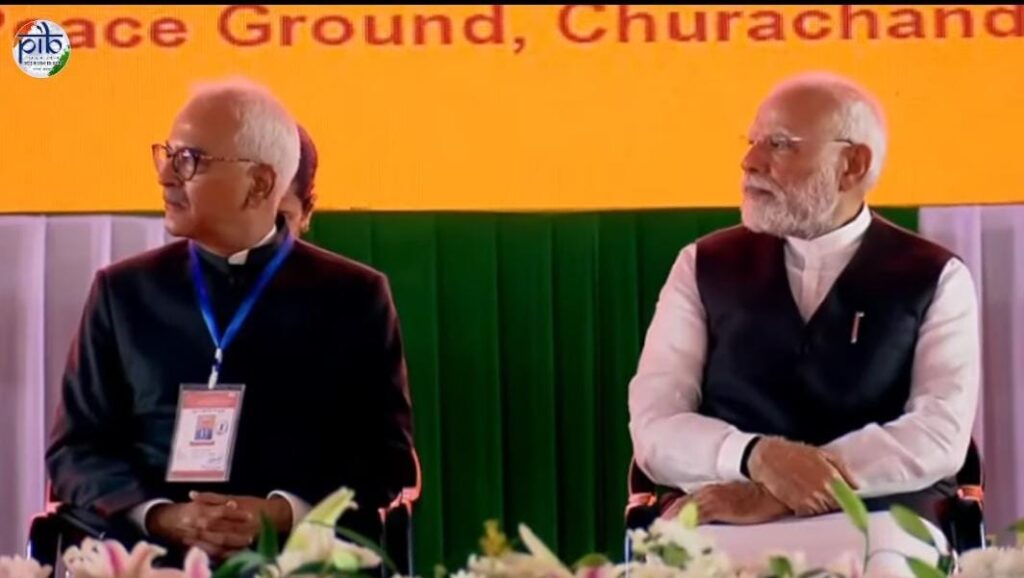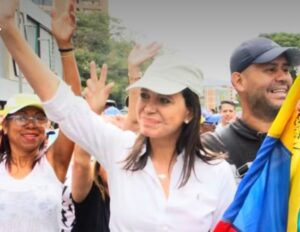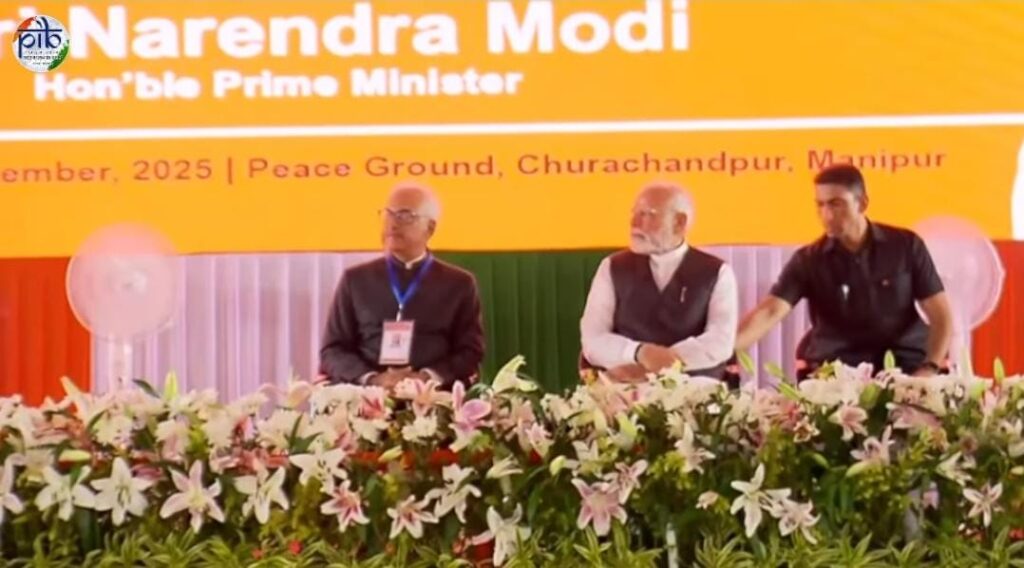
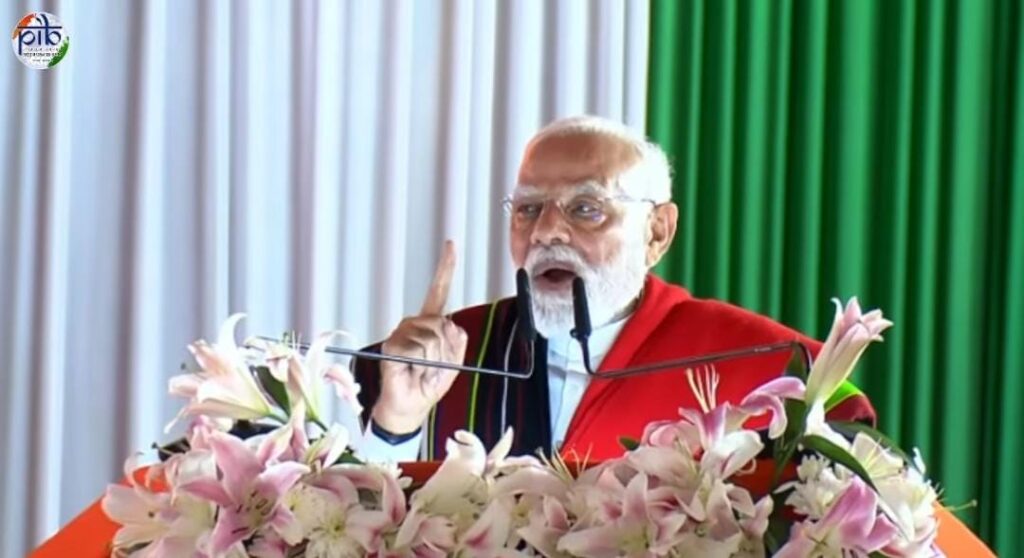
An analysis of what drives this visit, what it could deliver — and whether it can heal deeply rooted wounds.
The Delay — Why Now, and Why the Wait?
On May 3, 2023, ethnic violence erupted in Manipur between the majority Meitei community in the Imphal Valley and the tribal Kuki-Zo people from the surrounding hill areas.  Over the past 27 months, more than 250 people have been officially reported killed, tens of thousands displaced, dozens of places of worship and thousands of homes damaged, and persistent tension between the communities. 
The state slipped into crisis: breakdown of law and order, allegations of bias in policing, and a collapse of political stability. Chief Minister N. Biren Singh resigned in February 2025, and the union government imposed President’s Rule shortly thereafter. 
So why has the Prime Minister waited until mid-September 2025 for a personal visit?
•The violence has not stopped abruptly; although there has been a reported decline in large-scale clashes since President’s Rule was imposed. 
•But the political pressure has been mounting: from opposition parties, civil society, and displaced communities demanding attention, rehabilitation, justice, and clear timelines for return. 
•The timing also coincides with preparations for multiple state polls in 2026, and the Centre may well see strategic value in staking a claim to moral leadership and responsiveness in a troubled northeastern state. 
Thus, while the delay has been widely criticised as show of neglect, it seems political, administrative, and security considerations have converged only now to make such a visit feasible.
The Compulsion Behind the Visit: What the Centre Aims To Do
From public statements and media reports, the Prime Minister’s visit is not purely symbolic. The agenda involves several key elements:
1.Development Projects and Infrastructure
Modi is expected to lay foundation stones or inaugurate projects worth approx ₹8,500 crore in Manipur—about ₹7,300 crore in Churachandpur (Kuki‐majority hill area) and another ₹1,200 crore in Imphal. 
These include healthcare facilities, working women hostels, Eklavya residential schools for tribal youth, a Manipur Infotech development project, Manipur Bhavans in Delhi and Kolkata, etc. 
2.Engagement with Displaced Persons
The PM will meet internally displaced persons (IDPs) in Churachandpur and Imphal. The relief camps—more than 280 in number, housing some 57,000 people—have continued to exist for over two years. 
3.Political Signaling & Restoring Governance
With the Assembly under suspended animation and President’s Rule in place since February 2025, the Centre needs to show control, engagement, and credible effort toward restoring normalcy. The extension of President’s Rule for another six months has already been approved by Parliament. 
4. Security Oversight
Ahead of the visit, senior Army and security officials reviewed the situation in several key districts (Churachandpur, Imphal, Bishnupur). Curfews or buffer zones, “no drone zones” in certain districts, heightened vigilance. 
Hopes on the Ground: What People Want
For people in Manipur—especially displaced persons, tribal communities, Meiteis in hills, and everyone who has lost homes, security, dignity—the expectations are many, and high. Key ones include:
•Rehabilitation and Return: Restoration of homes, property and security to allow IDPs to go back in safety. Closure of relief camps. 
•Justice and Accountability: Those affected expect investigations, accountability for violence, fair policing, impartial law enforcement, protection of minority rights, and communal harmony.
•Political Inclusion & Dialogue: Many demand that civil society groups, political parties (not just the BJP or government apparatus) be included in peace committees, all-party meetings, etc. 
•Development & Infrastructure: Better roads, health facilities, access to education, jobs—especially for youth and tribal populations. Also basic services that may have suffered from disruptions.
•Long-term Solutions to Ethnic Grievances: Genuinely resolving demands such as separate administrative regions (as some Kuki-Zo groups demand), clarifying reservation/quotas, dealing with forest land issues, etc. 
What Might Be Announced — And What Might Not
From the available reports, the PM will bring some deliverables:
•Projects worth ₹8,500 crore, infrastructure and social welfare oriented. 
•Specific investments in Churachandpur and Imphal to signal equity between hill and valley, Meitei and Kuki-Zo majority areas.
•Some symbolic and practical interactions: meeting IDPs, possibly inaugurating relief-related works.
But there are things likely not to be on the agenda, or that may be promised only vaguely:
•Immediate resolution of contentious political demands (e.g. separate administration / union territory status for Kuki hills) — these are complex, likely to require long negotiations.
•Major institutional changes (e.g. overhaul of police, judiciary) may not be fully spelled out at once.
•Clear timelines for elections: while there are demands from opposition, and legal obligations, restoring electoral government—even under normal conditions—requires substantial groundwork.
Will It Heal? Can Peace Return?
“Healing touch” is the phrase often used. Whether this visit delivers that depends on both substance and perception.
•Peace has not returned fully: Although President’s Rule is reported to have reduced the frequency of mass violent incidents, buffer zones remain; many people are still displaced; there is still sporadic tension. 
•Symbolism matters: The PM visiting personally, meeting victims, inaugurating development in tribal hill districts — all carry weight. It sends a message that the central government is not ignoring the crisis. But whether that message converts into trust is another story.
•Speed and follow-through will be crucial. If people see the new projects getting delivered, camp closures, returns happening, justice being done, only then can the emotional wounds start to heal.
Political Undercurrents & Electoral Calculus
There’s no escaping the political dimension:
•Manipur Assembly elections are due in 2027, but the BJP has suffered setbacks, criticisms, and loss of credibility in the state over the past two years due to its handling of the crisis. 
•With President’s Rule in place, and questions raised about governance failure, the Centre probably wants to reset the narrative, avoid further erosion of support among tribal communities and elsewhere.
•Opposition parties have already accused the government of neglect and of delaying the visit. The timing just before festival season, Modi’s birthday (September 17), etc., adds symbolic packaging to the visit. 
But while it may act as a precursor or soft launch toward reclaiming political legitimacy in the state, it is not certain that elections will be brought forward or that the BJP will immediately be able to restore popular government—unless public sentiment shifts sharply.
Ground Mood & Hostile Reception
Reports from on the eve of the visit suggest a mixed, largely skeptical reception:
•Displaced Kuki-Zo community members have expressed “emotional resistance”—they feel the government has not done enough, and being visited now seems too little, too late. 
•Some local groups and opposition politicians expect more than ceremonies; they want concrete action: return of IDPs, justice, dialogue. 
•There is criticism over the Centre’s lack of engagement over the past two years. Silence, delayed responses, perceived bias have created distrust.
So, Is It Too Little, Too Late — Or A Turning Point?
This visit is perhaps both.
•Too little if measured by the unmet demands: justice, return of displaced persons, internal grievances not yet acknowledged, and failures in security and equal treatment.
•Too late in that many believe the Prime Minister should have visited earlier; the perception of neglect has caused resentment that will be hard to erase.
But it can be a turning point:
•If the announced projects are implemented swiftly and fairly, if the government ensures equal attention to all communities and visibly reduces suffering of the displaced, this visit may begin the process of trust-building.
•A public show of unity, inclusion of civil society, transparent timelines may go a long way.
Verdict: “Better Late Than Never”?
At least for now, this visit looks like a necessary gesture, a signal that the Centre is acknowledging the gravity of the crisis in person, not just in speeches. The combination of project announcements plus meeting IDPs gives hope. But unless these are backed up by sustained, credible action — justice, returns, political clarity, institutional reforms — it will remain, at best, a symbolic start rather than a healing finish.
People of Manipur expect more than promises; they expect measurable change. The visit has the potential to deliver some relief and a sense of “we are seen”. Whether it delivers lasting peace and a full return to normalcy is another question — and will depend on what happens in the weeks and months that follow, not only during the few hours the Prime Minister is in the state.
Headlines & Takeaways
•PM Modi is under both moral and political compulsion to show up.
•₹8,500 crore in project announcements are welcome but will be judged on implementation.
•Unless dialogue and justice are part of the package, the feeling of “hostile reception” may deepen.
•Restoring trust, not just infrastructure, will be the real test.
In the end: for many that have suffered for over two years, it may well be better late than never — but it may still not be enough.
Hasnain Naqvi is a former member of the history faculty at St. Xavier’s College, Mumbai
